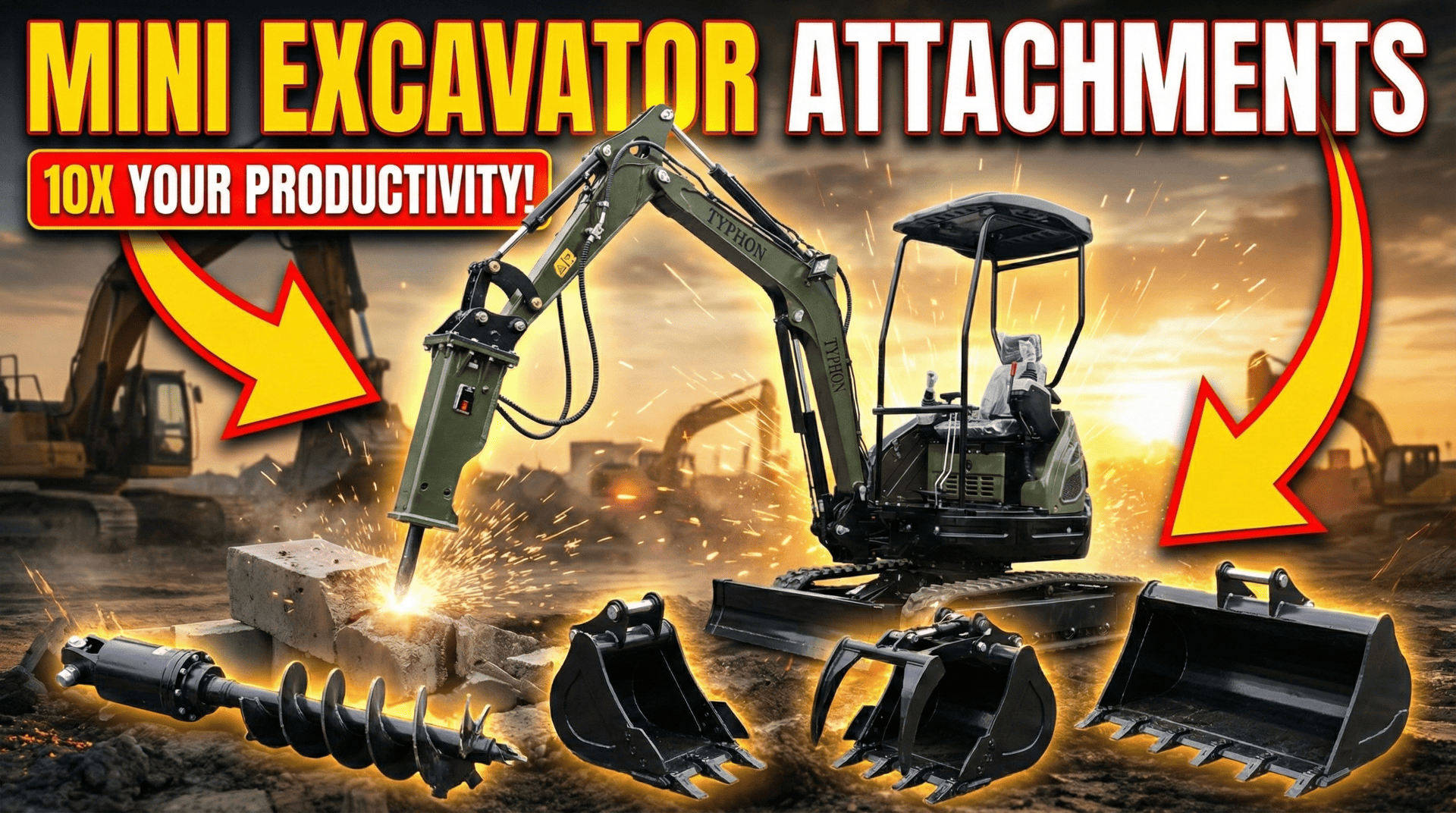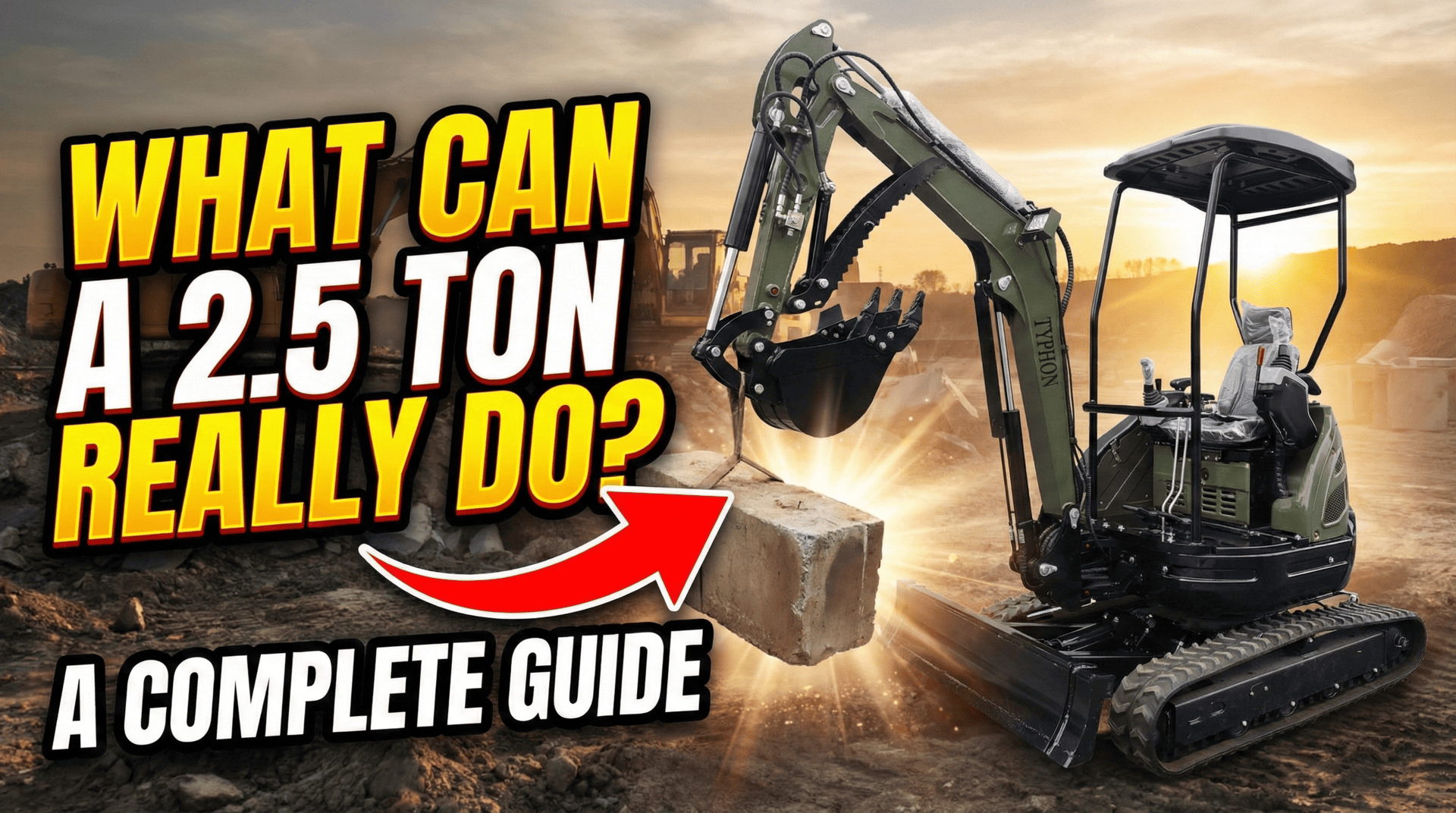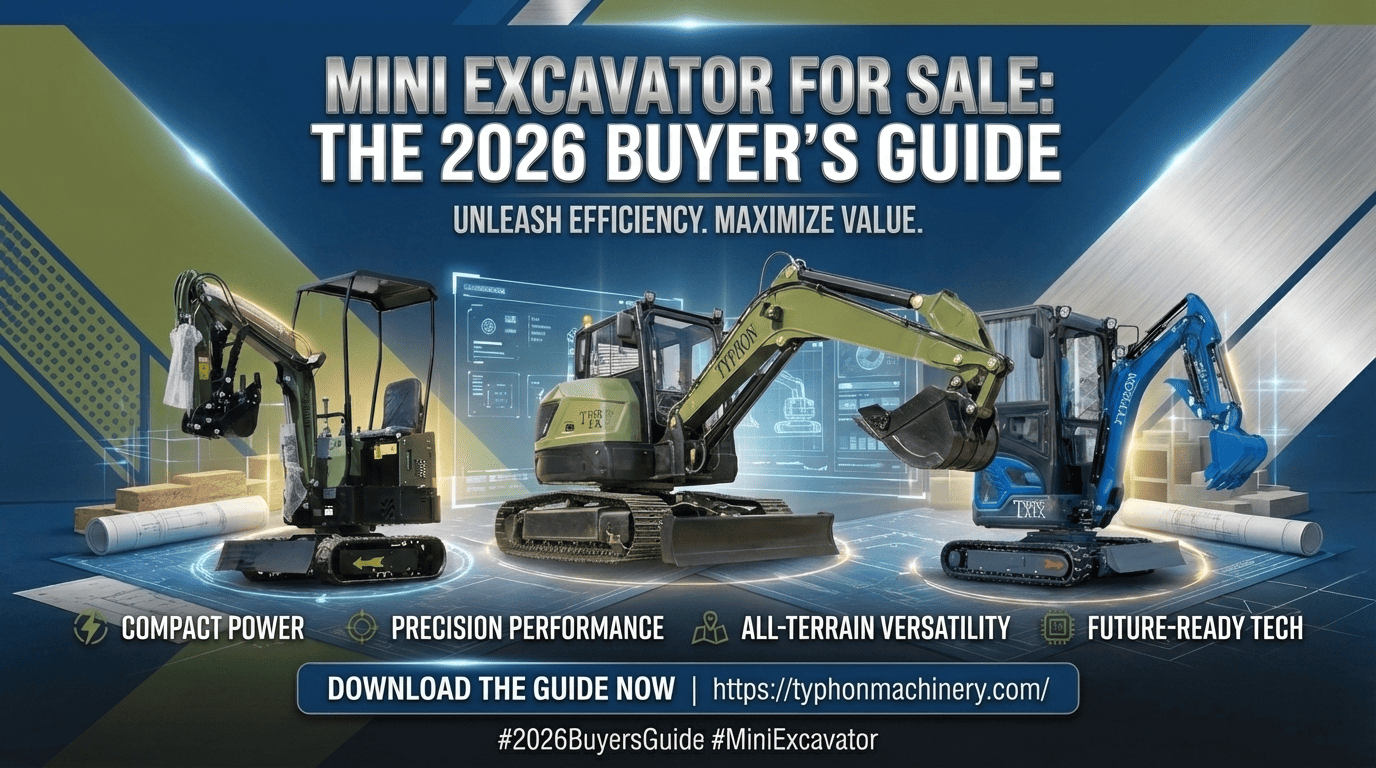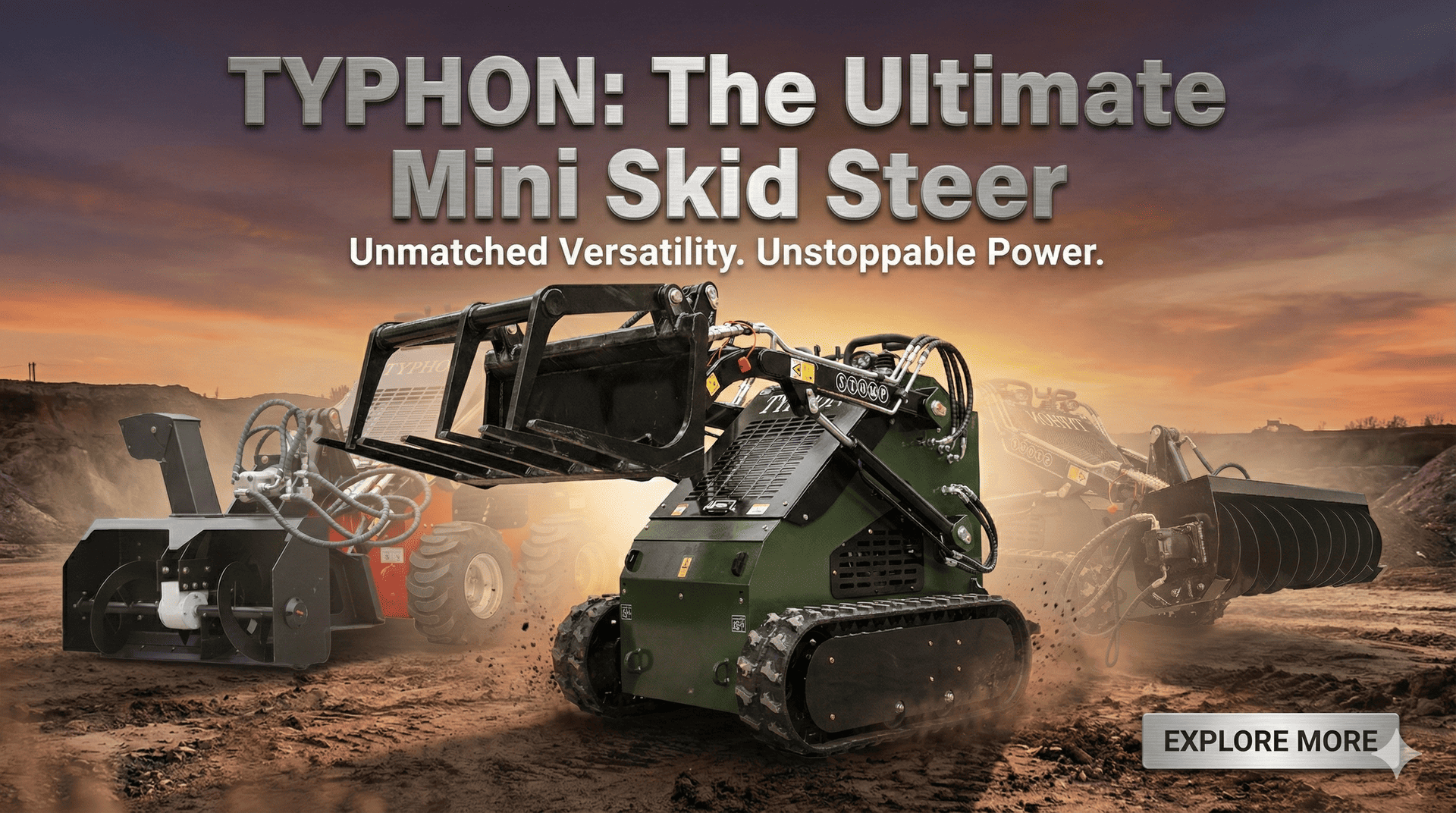How to Change the Bucket on Your Mini Excavator? Ensuring safety and improving the operation of your machines depend on proper maintenance of your mini excavator, particularly including the bucket. Frequent bucket changes not only increase the lifetime of your equipment but also maximize its performance for different operations. Use the following instructions for a flawless bucket swap procedure.
Importance of Regular Bucket Maintenance
Buckets perform the majority of the labor in construction; abrasives, heavy objects, and other materials are constantly around them. Timeliness of replacement and regular maintenance help to avoid needless wear on other parts and guarantee that your mini excavator runs as it should.
Step-by-Step Instructions to Remove the Old Bucket
- Position the Excavator Safely:
- Park on a flat, stable surface.
- Engage the parking brake.
- Turn off the engine.
- Relieve Hydraulic Pressure:
- Move the control levers several times to release any residual pressure in the hydraulic lines.
- Access the Bucket Pins:
- Locate the pin locking mechanism, typically found near the bucket hinge.
- Use appropriate tools to remove locking clips or pins.
- Detach the Bucket:
- Carefully lower the bucket to the ground.
- Slowly retract the bucket arm to disengage the bucket from the quick coupler or pin.
Selecting the Right Replacement Bucket
Choosing the right bucket is crucial for optimal performance. Consider the following:
- Job Requirements:
- For digging, choose a trenching or digging bucket.
- For grading or leveling, a grading bucket is best.
- Material Type:
- For rocky terrains, opt for a heavy-duty bucket.
- For soft soils, a lightweight bucket will suffice.
Attaching the New Bucket Securely
- Align the New Bucket:
- Position the new bucket under the coupler arm.
- Ensure it’s level and properly aligned with the arm.
- Install the Bucket Pins:
- Insert the pins into the hinge openings.
- Secure with locking clips or pins, ensuring they’re tightly fastened.
- Test the Bucket Movement:
- Gently operate the arm to ensure smooth movement.
- Check that the bucket doesn’t wobble or shift during operation.
Inspecting the Bucket and Hydraulic Connections
- Visual Inspection:
- Check for visible wear and tear, particularly around hinges.
- Inspect hydraulic hoses for leaks or damage.
- Functional Testing:
- Operate the bucket through its full range of motion.
- Listen for unusual noises indicating misalignment or loose parts.
Conclusion
Keep in mind that for your particular mini excavator model, always follow manufacturer recommendations. Frequent maintenance inspections and quick bucket changes improve job site safety and performance in addition to extending equipment life. Stay safe and maintain the best condition of your machines!
Changing the Bucket on Your Mini Excavator: A Simple 5-Step Guide
Purchasing a new bucket for your mini excavator excites you. Changing out excavator buckets at first seems rather difficult, whether your goal is to boost the productivity of your machine or just test a different tool. But not to worry! Breaking the entire procedure down into five simple steps, this guide will help you negotiate it. Moreover, we will offer some extra safety advice to help you stay safe all through.
Five Steps to Change Your Mini Excavator’s Bucket
- Park Your Mini Excavator: Start by parking your mini-excavator on level ground so that changing buckets have enough working space. Remember to lower the arm of the excavator, turn off the engine, apply the parking brake, and verify that the excavator stays still.
- Remove the Existing Bucket: After the engine off, cycle the controls first, removing any leftover hydraulic pressure. After that, utilize the connection pins—or automatic coupler system—that link the bucket to the arm of the excavator to separate the bucket. Removing pins can require a hammer and punch, a pin press. Use the latch systems or manufacturer’s manual directions for correct detachment for quick couplers.
- Attach the New Bucket: Align the new bucket with the arm of the excavator and fastly attach it with the same pins or couplers. To be sure everything is firmly fixed and ready for use, always double-check.
- Check if Everything Works: Test if everything runs as expected by returning to the control table of your mini-excavator. To be sure all is operating as it should, move the excavator arm and tilt the bucket. Look for any indications of problems in the hydraulic system and attachment.
- Carry Out Final Checks: Before getting to work with your new bucket, conduct one last round of checks. Inspect the bucket attachment once again, look for any loose pins, screws, detached cables, and hoses. It’s also a good time to inspect the rest of the excavator.
Bonus Tips
Given the typical mini-excavator bucket weighs more than 200 lbs, changing buckets on one calls for some muscle. Consequently, always wear appropriate safety gear—a hard helmet, steel cap-toe shoes, and gloves. Steer clear of overflowing your bucket to avoid additional possible hazards, such overtipping.
Going through this step, always consult your manufacturer’s or user manual to prevent any errors. Best results are advised from high-quality mini-excavators and attachments. Those looking for quality substitutes might give these some thought: TYPHON 200mm trenching bucket, TYPHON screening rock bucket, etc.
As it happens, changing a mini excavator bucket is not as difficult as it first sounds. Follow these guidelines, keep in mind to be safe, and in no time you will be easily shifting out buckets!









